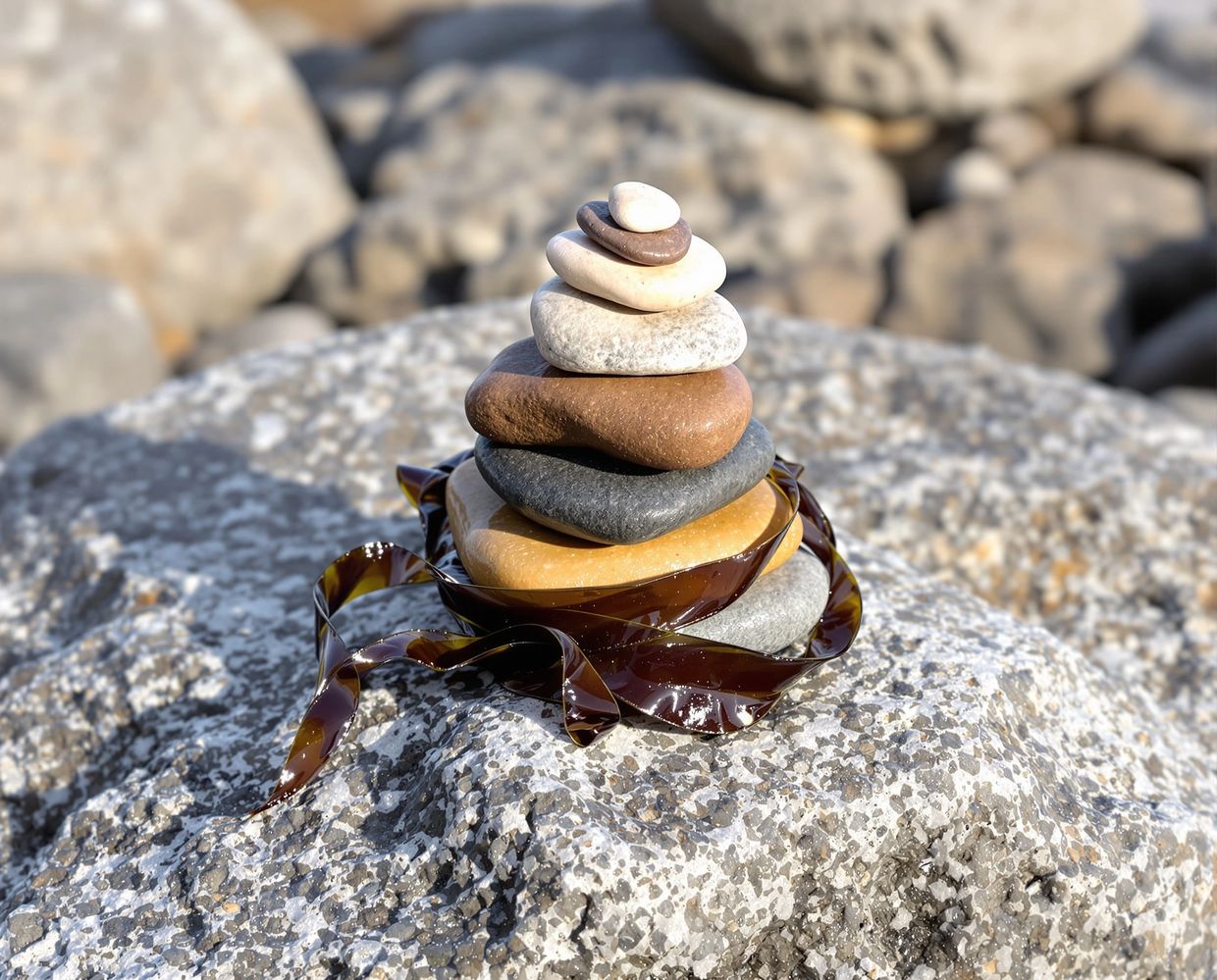Totem: small prayers to impermanence

On the south coast of England, just east of Brighton, lies a small village called Rottingdean. It’s a quiet stretch of coastline: chalk cliffs, a view of the English Channel, and a beach made entirely of rounded pebbles. At dawn or low tide you can find traces of what the waves have left behind — seaweed, driftwood, seagull feathers, worn fragments of sea glass — the raw materials of a quiet devotion. Here Totem begins, on the edge of land and water, in the company of stones, salt, and time. This isn’t Land Art, not really. Land Art is monumental, and often territorial. Totem is intimate, local, human-scaled. It is not about conquering nature but listening to it, touching it, collaborating with it.
These simulated assemblages read as coastal rituals — temporary arrangements of found matter offered to something unseen. Totem gathers these elements not as artefacts but as records of a conversation with the shore. They are not monuments but gestures: small altars made from what the tide leaves behind. They are acts of communion — pebbles stacked into cairns, seaweed woven into nests, feathers resting like breath. The hand that made them feels both human and elemental: a beachcomber, a shaman, an eco-warrior perhaps — moved by the urge to shape meaning from what the sea gives and takes away. The compositions remain plausible, salt-worn, and true, humble enough to be left behind and found by someone else.
Though created with artificial intelligence, Totem speaks in the language of tide and weather. The work lingers between reality and fiction, between material truth and the dream of nature. Each assemblage exists halfway between sculpture and apparition, as if conjured from the shoreline’s memory. There’s no manifesto or environmental protest here, only reverence — a reminder that even the humblest fragment, a pebble, a feather, a stone, can still carry the weight of devotion. These are small prayers to impermanence — offerings to the shoreline itself.
“We do not create the landscape — we participate in it.” — Andy Goldsworthy
Copyright © David Name 2025.
All rights reserved.